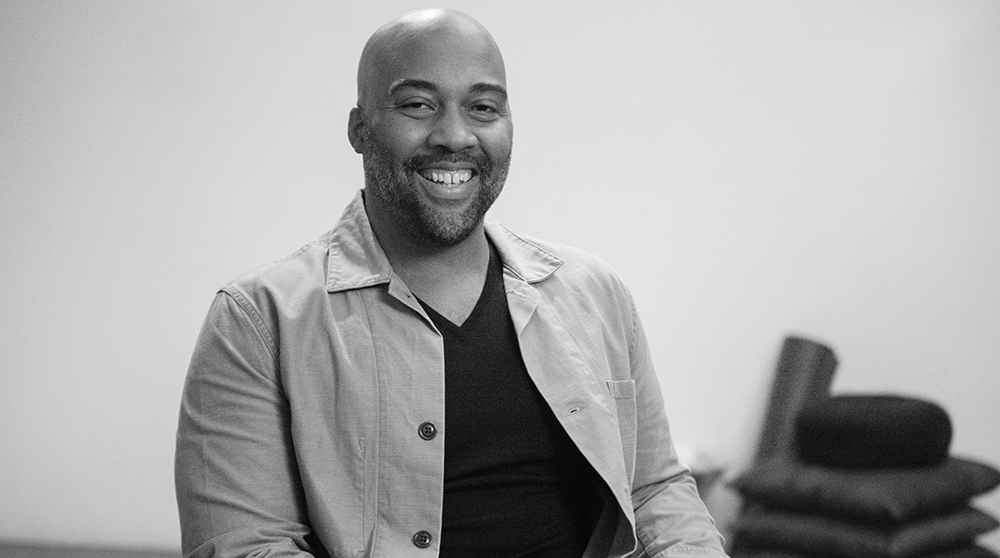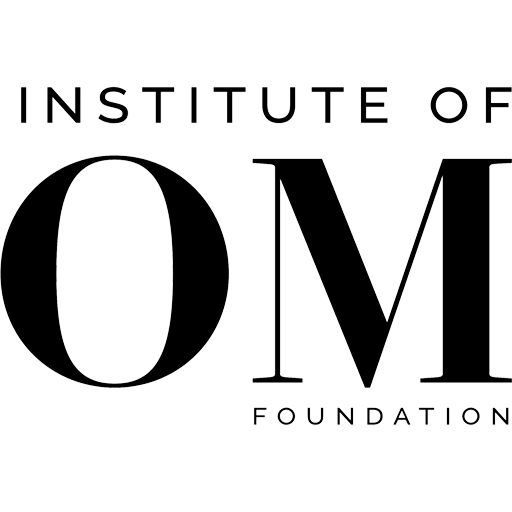Unraveling cultural complexities around sex, science, and the potential for healing through intimate connection
Meditation, in its abundant forms and traditions, has held varieties of meanings across cultures, traditions, and history for millennia, and it is the practice and very conceptualization of meditation that can be traced as perhaps one of the most continually evolutionary mind-body practices of all humankind.
Buddhist scholars and scientists investigating meditative practices will be the first to acknowledge that there are many ways of defining what a contemplative or meditative practice is, let alone how it is structured and performed (Nash et al., 2013). A principal element of a majority of meditative practices is the focusing of attention on specific physiological processes or activities, such as breathing or walking, as a means of facilitating attentional clarity. By applying the most fundamental methods of attentiveness or mindfulness, a relatively wide spectrum of physical activity or sensations, such as heart rate, pain, heat and cold (think Wim Hoff), have historically been considered to fall under the category of meditative or ‘contemplative practices’ as they are referred to in scientific literature.
Now, a recently but rapidly accumulating selection of research studies examines the effects of a unique meditative practice that harnesses the salience of sexual stimulation and sensory awareness as the main attentional focus of an accepted and demonstrably beneficial contemplative practice. While some forms of meditation are about focusing attention on the breath, a repeated mantra, a point on the body, a tense muscle or an object such as a candle flame, this particular practice, known as Orgasmic Meditation (OM) focuses almost entirely on the clitoris. Practitioners of OM have described various experiences matching those who, practicing other meditative protocols, describe spiritual heightening and advancement, such as a feeling of oneness or connectedness, and a sense of flow and increased awareness. Emotional reactions, including a profound sense of relaxation, energy, or joy are also described by OM practitioners (Newberg et al 2021).
Thus far, this complex, ongoing research program, enabled with the support of the Institute of Orgasmic Meditation, has assessed various psychological, clinical, physiological, psychological, and neurological metrics, and supports ongoing research characterizing the OM practice and effects.
As a neuroscientist who has studied more traditional contemplative practices over the past 15 years, at a first glance, OM to me seemed somewhat divorced from the rigorous methods and techniques detailed in texts such as the Vedas, the yoga sutras, the Pali Canon, and the Tibetan book of the dead, most of which I read during my doctoral studies, and while living and conducting research in India.
However, the perspective of Dr. Andrew Newberg, a leading American nuclear medicine specialist and neuroimaging scientist at Thomas Jefferson University Hospital in Philadelphia, helped broaden my understanding of the origins of spirituality, ritual, and consequent development of religion and contemplative practices in ways that expanded my own thinking about my earlier studies and research .
“The evolution of rituals in humans really started with the evolution of rituals in animals,” Newberg says. “And those rituals had one aim: mating. People made rituals a lot more complicated. There is a very close relationship between mating rituals, how they work physiologically, and the function they serve, with what’s going on in the brain in terms of religion and spirituality in humans.”
Dr. Newberg, who has conducted a series of functional magnetic resonance imaging, (fMRI), PET Scan, and physiological studies on OM, says he could see clearly from the outset of his work the direct connection between intense spiritual experiences and sexual practices. When approached by the Institute of OM to research what was happening during the practice, he said he now had before him “…a really fascinating opportunity to be able to study the intersection between these sexual processes of our body and mind, and how they connect with these spiritual constructs.”
While the origins of animal and human ritual evolved from the original goal of sexual reproduction, many ancient traditions find ways of incorporating sexuality or sexual stimulation into an overall spiritual approach, such as Tantric practices that emerged out of Hinduism, where the accumulation of sexual energy is intentionally directed throughout the body to increase sensory awareness and attentional acuity. The Taoist traditions have documented and detailed sexual practices designed to bring the Yin and the Yang (feminine and the masculine) impulses into harmony, while a variety of yogic and Buddhist traditions also detail nuanced meditative methods for integrating aspects of sensuality and our biological sexual dispositions.
OM defines itself as a meditative practice that is definitively separate from the act of sex, and practitioners report anecdotal benefits similar to other mindfulness based practices, in addition to the well-known health benefits associated with orgasm (Lakshmin, 2013). In OM, practitioners describe a number of feelings that are common to other forms of meditation. The woman, who is always the “receiver,” rests in a comfortable place, while her practice partner sits beside her, and is tasked with stimulating her clitoris for 15 minutes with a gloved, lubricated finger. The practice partner remains fully clothed through the entirety of the process.
“The goal is not orgasm, although that sometimes happens”, Dr. Newberg says.
The Institute of OM welcomes all individuals, regardless of sexual orientation, and has a growing number of lesbian, gay, and bisexual members. Practitioners of OM meditate in pairs, creating what is referred to as a “container,” which specifies a defined sequence of steps that are deliberate and structured. According to research on OM, this container between pairs generally results in reproducible experiences in practitioners who aim to develop a heightened sense of awareness by focusing on their physical sensations (Millar, 2015).
Dr. Newberg’s team revealed in a recently published study that they were able to measure changes in resting brain functional connectivity, with blood oxygen level dependent (BOLD) fMRI associated with OM. The results demonstrated a complex pattern of functional connectivity changes occurring in both members of the OM practicing pair, representing a hybrid of functional connectivity findings with some similarities to meditation-based practices, and some with sexual stimulation and orgasm.
Interestingly, the findings also supported the notion that both males and females are actively engaged in the practice, and derive some similar experiences in terms of the meditative elements, even though there are also distinctions between the male and female participants’ brain activities. They also found significant changes in autonomic activity based on heart rate variability data associated with the OM practice, which primarily reflects increased sympathetic tone.
In discussing the intricacies of conducting research on OM, Dr. Newberg points to the key elements of the practice that make it a legitimate target for scientific study. First, OM is a well-defined meditation practice that has clearly defined elements and timing. The standardization of the practice makes it easier to develop a consistent research protocol, whereas other meditation practices can last for hours, and can have more open-ended approaches, such as focusing on a mantra, with little other specific guidance as to the approach. During OM, the practice is performed in pairs, but the subjects interact in a similar manner each time. The OM practice specifies that both members of the pair are engaged in the meditation practice, even though their role in the practice is very different. And, since both participants perform different elements of the meditation practice, varied but measurable results were to be expected, given that there would be distinctions in subjective response and physiology for each participant.
Dr. Newberg summarized his findings, saying “In the men, we see brain activity that resembles that of a flow state, whereas for the women, it appears as though they experience feelings of ‘oneness.’”
Another related research study, led by Dr. Vivian Siegel, a leading biologist and expert in scientific communications at MIT, investigated mystical experiences during OM, and to what extent experience was correlated between the practicing partners.
Participants were asked to complete the Mystical Experiences Questionnaire (MEQ30), which aims to capture the defining features of classic mystical experiences, including feelings of unity, sacredness, ineffability, peace and joy, as well as a sense of transcending time and space and an intuitive belief that the experience is a source of objective truth about reality. They completed the MEQ with a single powerful OM in mind.
Respondents reported a moderate-to-strong mystical experience, with 62 percent relaying a “complete mystical experience,” and with women reporting a slightly stronger response in this respect than men as strokers.
In a second study, practitioners were asked to complete the MEQ immediately after their most recent OM. Most of these respondents reported a moderate mystical experience, with another 23 percent reporting a “complete mystical experience.” The study researchers also found a strong relationship between MEQ total score and role (i.e., recipient and stimulator), and a significantly stronger relationship between partners and MEQ total score. According to these measures, the effects of OM are comparable in magnitude to similar studies of subjects consuming a moderate dose of psilocybin (Siegel and Emmert-Aronson, 2019).
Given the recent findings suggesting that psilocybin appears to be effective in the treatment of a number of psychiatric mood states and dependence disorders, it is intriguing to speculate that OM might also be effective in the treatment of similar afflictions – a intriguing prospect that is likely to be addressed further when the Institute of OM launches its own anticipated clinical studies.
When it comes to the relationship between sexual practices, orgasm, health, and how all of this connects back to general health and the brain, it came as somewhat of a surprise, when speaking to leading neuroscientist and sex expert Dr. Nicole Prause, she said that we still know surprisingly little from a purely scientific viewpoint.
In discussing the possible role of cultural stigmas around sex, Dr. Prause says “…there is a general cultural resistance to turning the causal arrow. Many research scientists in the field are constantly advocating for the importance of sex — that women are entitled to orgasm, and that we should close the ‘orgasm gap.’ People should be educated about pleasure and sex ed… But what we really need to do in order to change the way we think about sex is to turn the causal arrow around is to say ‘we’re going to use sexual response and sexual stimulation as a way to impact and promote general health’.
Dr. Prause continues: “The example I love to give is using the climax response, which primarily provokes a bolus of vasopressin, which helps people fall asleep. Sexual response is incredibly good for the overall health of the human body, yet it is not in any assessment protocol, or in any intervention. Why the hell not? I think part of the problem stems from deeply rooted traditional opinions that sex is about procreation. In addition, the anti-masturbation sentiment is very prominent, and it’s not fringe groups. This idea that sexuality needs to occur within a very certain context is still very prominent, particularly in the US”.
For Dr. Prause, the scientific study of OM is of particular interest due to the highly structured nature of the practice.
“It’s the rigidity of the protocol. That’s not to say people don’t have sexual scripts… When you have been with a partner for a period, you basically know what’s going to happen …so it’s not entirely accurate to say OM has a script and sex doesn’t. But what OM does is it makes the protocol very formal, with the goals being explicitly different. It could be that you have a sexual experience where the goal is to just feel, but that’s not happening very often. With OM we have a very rigid protocol that’s explicit, where the goals are largely different from sex.”
A study on the relationship between OM and connectivity (Prause, Siegle, Coan, 2021) found that feelings of connection increases after an OM session. But what Dr. Prause found particularly interesting was the interaction with the partner type.
“We found that it increased more for people who didn’t have a romantic connection …it was people who did not have (an existing) connection that showed a greater increase in feelings of connectivity. The way I understood that was, especially in those folks who didn’t have a romantic partner, they probably felt a little less connected, maybe a little more lonely. And in the public view, and in a lot of therapists’ views, that shouldn’t happen. You shouldn’t be able to feel close to someone unless it’s under their correct circumstances, which is an established trusting relationship. And so that kinda turned that on its head.”
In that same study, Dr. Prause and her researchers also found that OM increased self-awareness in both men and women, which in turn had a positive impact on their intimate and romantic partnerships. Women also reported that OM increased feelings of connection, as well as sensation, awareness of others, and self confidence, while improving communication and sex life.
Men also reported that OM increased intimate connection, confidence, awareness of others, physical sensations, and sexual awareness and knowledge about sex and women. Both men and women reported improved sex life and communication in their partnerships.
In discussing the driving forces behind the changes observed in practitioners of OM, the idea that the practice fundamentally reframes one’s sexual experience as a result of the structured nature of the process was discussed as a potential mechanism by which the practice has such transformational effect.
“In conducting research with people who tend to struggle with sex” Dr. Prause said, “distracting cognitions, which are usually non-sexual, is a common topic. Thoughts like ‘he’s looking at my thighs, my thighs are fat, I shouldn’t have had that burrito’.
“Then you have other types of non sexual thoughts, like, ‘I gotta get out of here. I’ve got to start the laundry before I go to bed. This is taking too long,’ these kinds of things. With OM, people know it will take exactly 15 minutes, and so for some people, there appears to be some relief that comes from that structure. You also have the touch deficit idea, especially with older adults. When we think about the nuts and bolts of it, it’s so strongly tied to depression in that particular population, I would imagine that OM would do particularly well (for them).”
While depression and OM may seem like an intuitive and relatively straightforward application of the practice, Dr. Dan Kriegman, one of the leading scientists in the study of trauma in Boston, says OM may be uniquely helpful for victims of trauma who often struggle to have healthy and positive relationships and sexual experiences.
Dr. Kriegman described some broader ideas around trauma as being “any experience that moves us away from the ability to experience joy and being alive. And if something blocks our enjoyment, that’s trauma, and that trauma can take the form of combat trauma, sexual abuse trauma, and child abuse victims. But there’s also a general background trauma that nobody gets away from, and that everybody experiences, to some degree.”
Kriegman continues: “We’re essentially born full of joy, and various kinds of trauma lead one away from and block one’s ability to experience that joy. Over time we develop this sense of fear, and we withdraw in order to protect ourselves. If you can recapture joyful and intense experiences of being alive, you may not need to go back to revisit the trauma. In fact, most of the modalities for trauma work to turn attention away from the experience. The trauma is so overpowering, so painful, that we want to teach the mind to focus somewhere else, and we want to be able to talk about the trauma but not be overwhelmed by the experience.
“But with OM, I use the metaphor of digging a tunnel through a mountain. If you want to dig a tunnel through the mountains, you’re going to need to use dynamite, you’re not going to use firecrackers. You’re going to use something that has force and power. It is dangerous, because it has force to the degree that it has power … but if handled properly and safely, it can literally move mountains. And what’s uniquely interesting about OM is that it taps into possibly the most powerful, joyful experience a human being can know, yet in a very controlled, tight, and safe container.”
Dr. Kriegman additionally described several of his own reflections on why he thought the scientific study of sex, orgasm, and practices such as OM have not always been considered culturally and scientifically important.”
“The driving force of much of human history has been men trying to achieve power in order to gain sexual access to women. It’s (a) desire for women and (an) urge to control and have access to women. Male sexual jealousy is the main cause of death outside of work, and historically it is why the sexual independence and freedom of women is not culturally celebrated or normalized in the ways it should be.”
What if, as some of these researchers are beginning to see for themselves, science can show us how a practice like OM, using the natural behaviors and energies of the body, can improve or heal maladies such as depression, trauma and addiction? Could sexuality, when framed in a new light, actually be a force strong enough to efficaciously treat varieties of diseases that afflict millions?
The burgeoning science behind a transformative meditative practice such as OM can reshape the way we think about intimacy, physical and emotional connectivity, mental and general health. Additionally, there is a growing sense of hope across a diverse scientific and academic community that OM may soon do much more than simply help transform the lives of its practitioners – that it may help society, that is, men and women alike, heal from its own historical and cultural trauma around women’s identities and sexuality.


